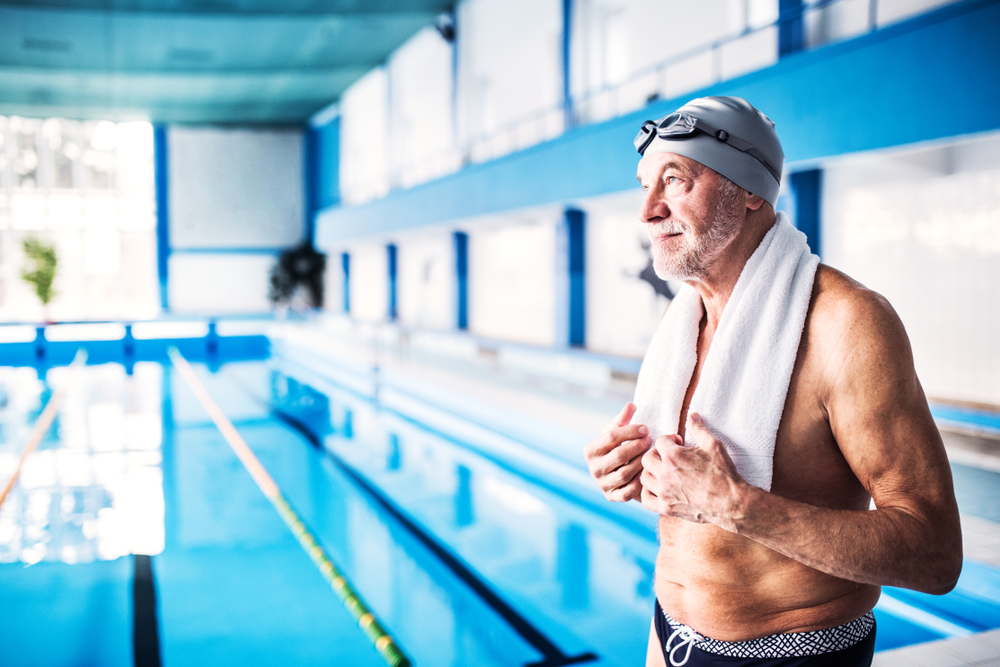
Healthy Bodies Make Healthy Minds
I am often asked to name a strategy that will clearly benefit the brain.
From the myriad of information that exists out there, a lot of confusion exists around diets, supplements, and lifestyle.
My answer and there is no question about it, the number one strategy is… physical activity.
Physical activity has been conclusively shown to not only prevent cognitive decline but even improve cognition.
Truly, “what is good for the heart is also good for the brain”.
Where’s the link between physical health and brain health?
There are actually numerous reports, which show a strong connection between cardiovascular health and brain health.
The better the shape of our cardiovascular health, the better our brains operate.
On the opposing side, cardiovascular disease has been shown to be a risk factor for Dementia, as there is an association between cardiac output, regional brain blood flow, and cognitive impairment.
You see, our brains have an elaborate network of blood vessels that are integral to brain function.
These networks supply oxygen and nutrients to brain cells and remove waste products and toxins.
Thus, through increased physical activity, resulting in more blood pumping throughout our bodies, our brain’s networks can push in more oxygen and nutrients and push out more waste products and toxins.
Physical exercise also protects against Dementia by decreasing other chronic diseases, such as obesity, diabetes, and hypertension.
All of which, are commonly associated with being leading factors in developing Dementia and Alzheimer’s in later years.
Both animal and human studies have shown, that physical exercise induces brain growth factors (BDNF, brain-derived neurotrophic factor and IGF1, insulin-like growth factor 1)
These promote the formation of new blood vessels, nerve cells (neurons) and nerve cell connections (synapses), which play a crucial role in our neuroplasticity and protection.
In other words, as we exercise, our brains actually GROW and develop connections.
This is especially important for people entering their Golden Years.
Studies have proven that those who exercise regularly, have increased brain grey-matter volume in regions associated with general intelligence and executive functions.
These include everything from attention to planning and problem-solving skills.
What am I basing this on?
Well, for starters, several studies which followed healthy adults from midlife (mean 45) to old age (mean 80), have shown that high levels of physical fitness at midlife were associated with a 6-10 times lower chance of developing dementia, compared to those who had low or very low cardio-vascular fitness level1.
A recent review of 39 interventional studies2, which randomized adults older than 50 years to an aerobic exercise group (tai chi, or resistance and/or aerobic training) or a control group (just stretching and toning), showed significant improvements in cognitive function after 6-12 months in the aerobic exercise group compared to controls.
The review concluded, that an exercise program with components of both aerobic and resistance-type training, of at least moderate intensity, and for at least 45 min per session, on as many days of the week as possible, is beneficial to cognitive function in adults aged >50 years.
Another recent review3 of interventional studies, which examined the optimal exercise dose for better cognition, concluded that a minimum of 52 total hours over 6 months (2-3 one-hour sessions per week) of any type of physical activity (cardiovascular exercise, resistance training, and mind-body exercises, or a combination) is associated with improved cognitive performance in older adults.
So, how can we integrate physical activity in our everyday life?
We have used here the terms physical activity and exercise interchangeably, but let’s examine how they differ.
Physical activity is any activity that gets your body moving such as gardening, walking the dog, raking leaves, and taking the stairs instead of the elevator.
An exercise is a form of physical activity that is specifically planned, structured, and repetitive such as weight training, tai chi, or an aerobics class.
We have no reason to believe that they differ in their effects on the brain, but obviously the former is less well quantified and studied.
However, if you can engage in an active lifestyle, which combines both, you will reap tons of benefits to your body health, cognition and mood.
You just need to make it a habit.
If you would like to find out just what kind of physical activity, exercises and habits, you can integrate into living a more active lifestyle, take a look at some of our previous Blog posts.
Click on the links below:
Have you seen our Videos?
We publish great new content every week, so be sure to check out our latest videos by clicking the link below, and SUBSCRIBE to our YouTube channel for updates as soon as new videos are posted.
If you would like us to feature a particular topic, or have any questions for us, please leave a comment below, or on our Facebook Page HERE
Until next time… Live Strong, Live Well, Live BrainFit.
REFERENCES – LINKS
- Midlife cardiovascular fitness and dementia: A 44-year longitudinal population study in women. Neurology. 2018 Apr 10;90(15):e1298-e1305. https://www.ncbi.nlm.nih.gov/pubmed/29540588
- Exercise interventions for cognitive function in adults older than 50: a systematic review with meta-analysis. Br J Sports Med. 2018 Feb;52(3):154-160. https://www.ncbi.nlm.nih.gov/pubmed/28438770
- Exercise for cognitive brain health in aging: A systematic review for an evaluation of dose. Neurol Clin Pract. 2018 Jun;8(3):257-265.https://www.ncbi.nlm.nih.gov/pubmed/30105166

